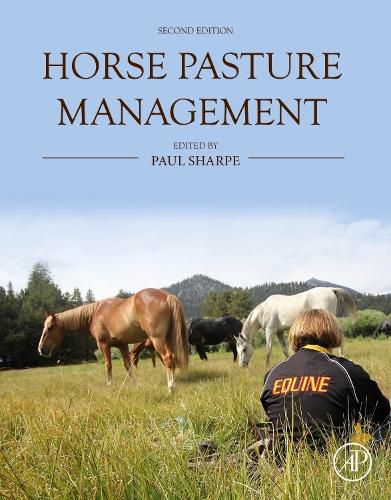Readings Newsletter
Become a Readings Member to make your shopping experience even easier.
Sign in or sign up for free!
You’re not far away from qualifying for FREE standard shipping within Australia
You’ve qualified for FREE standard shipping within Australia
The cart is loading…






Horse Pasture Management, Second Edition provides updated coverage on strategies for managing behavior, grouping, environments and feeding needs of grazing horses. Sections cover the structure, function and identification of forages, continuing into nutritional value of pasture plants. Management of soil, the function of a pasture ecosystem and management of plants in a pasture is covered next, followed by forage yield determination, horse grazing behavior, feed choices of horses, management of grazing horses, and how to calculate how many horses should be grazing relative to land size. Advantages of grazing more than one species of animal are described.
Management of hay and silage are included since year-round grazing is not possible on many horse farms. Several chapters deal with interactions of a horse farm with the environment, including climate and weather and other living things. The book also covers strategies for managing manure, erosion, and water quality. It is ideal for researchers, scientists and students involved in animal science, specifically equine studies. Agriculturists, equine managers and veterinarians will also find this book useful.
$9.00 standard shipping within Australia
FREE standard shipping within Australia for orders over $100.00
Express & International shipping calculated at checkout
Horse Pasture Management, Second Edition provides updated coverage on strategies for managing behavior, grouping, environments and feeding needs of grazing horses. Sections cover the structure, function and identification of forages, continuing into nutritional value of pasture plants. Management of soil, the function of a pasture ecosystem and management of plants in a pasture is covered next, followed by forage yield determination, horse grazing behavior, feed choices of horses, management of grazing horses, and how to calculate how many horses should be grazing relative to land size. Advantages of grazing more than one species of animal are described.
Management of hay and silage are included since year-round grazing is not possible on many horse farms. Several chapters deal with interactions of a horse farm with the environment, including climate and weather and other living things. The book also covers strategies for managing manure, erosion, and water quality. It is ideal for researchers, scientists and students involved in animal science, specifically equine studies. Agriculturists, equine managers and veterinarians will also find this book useful.